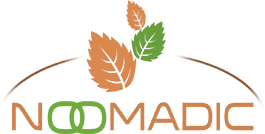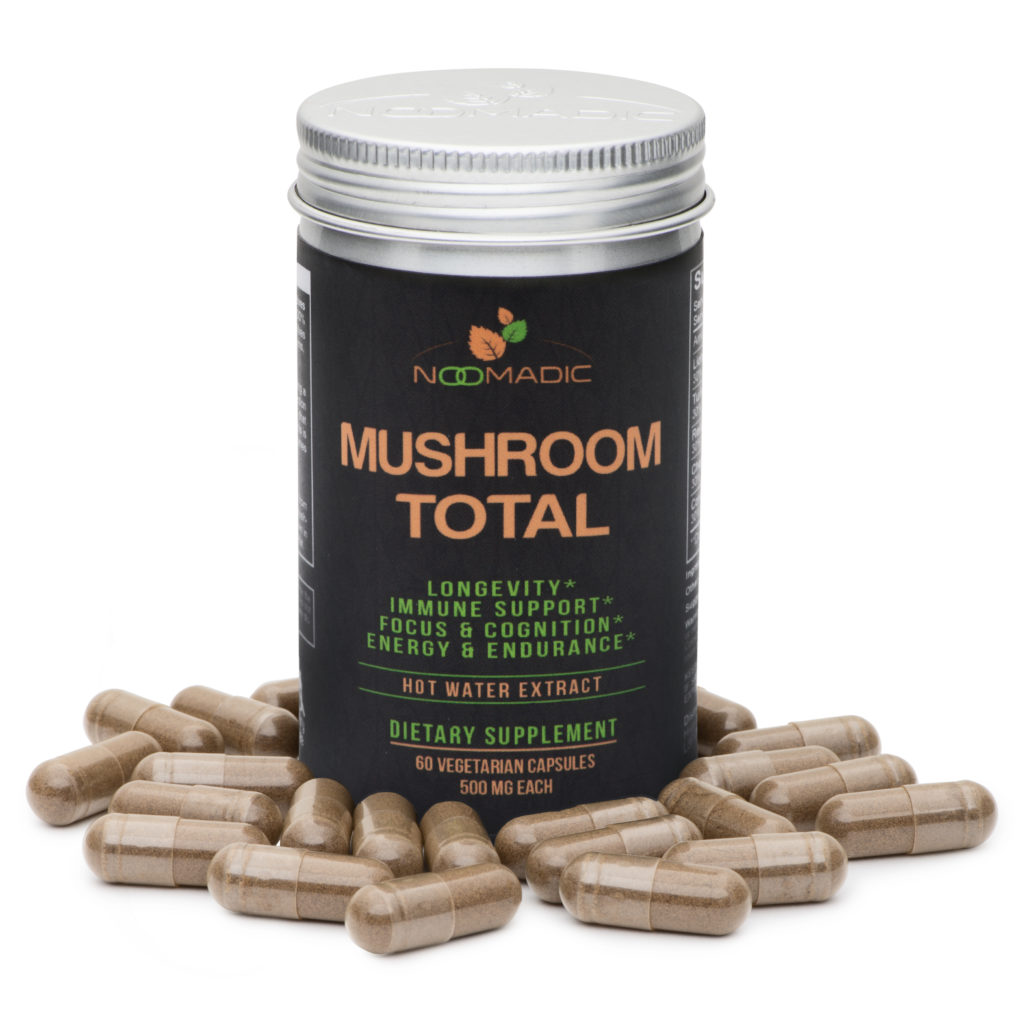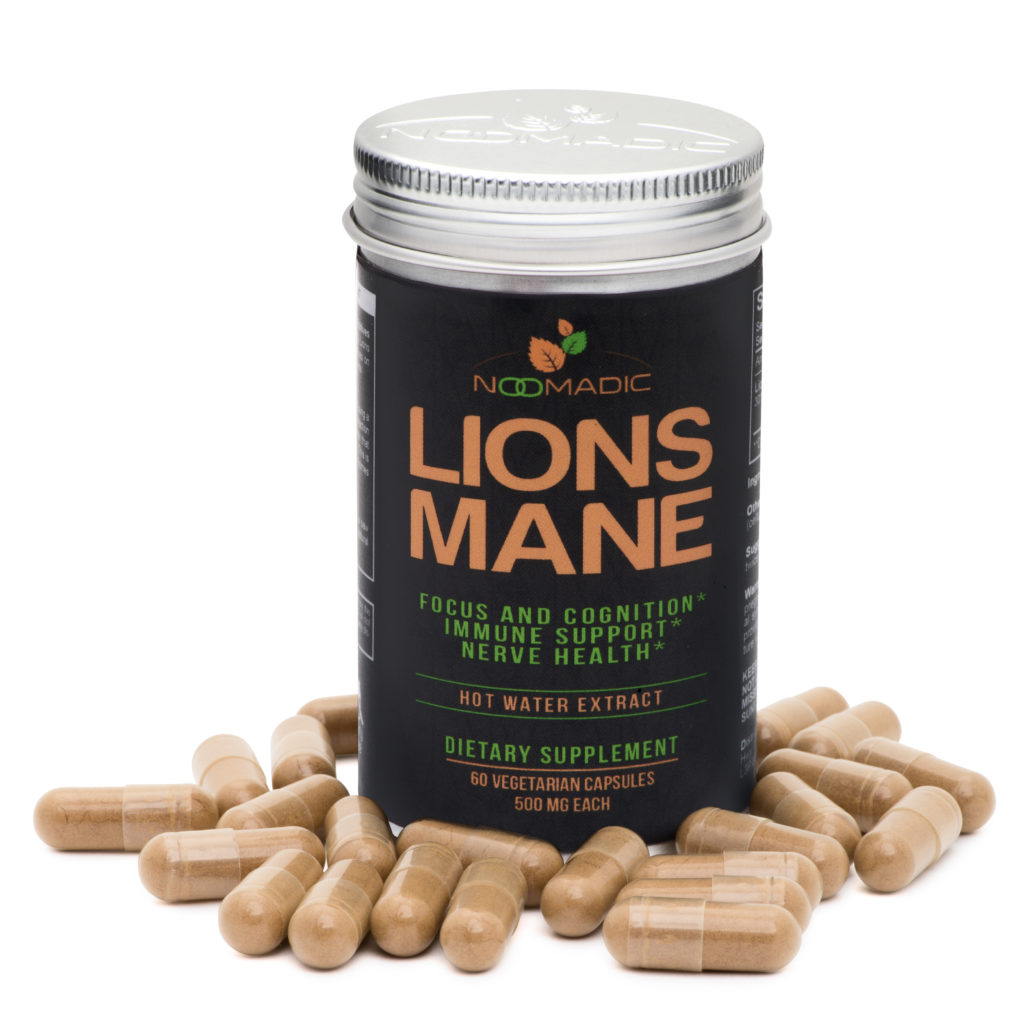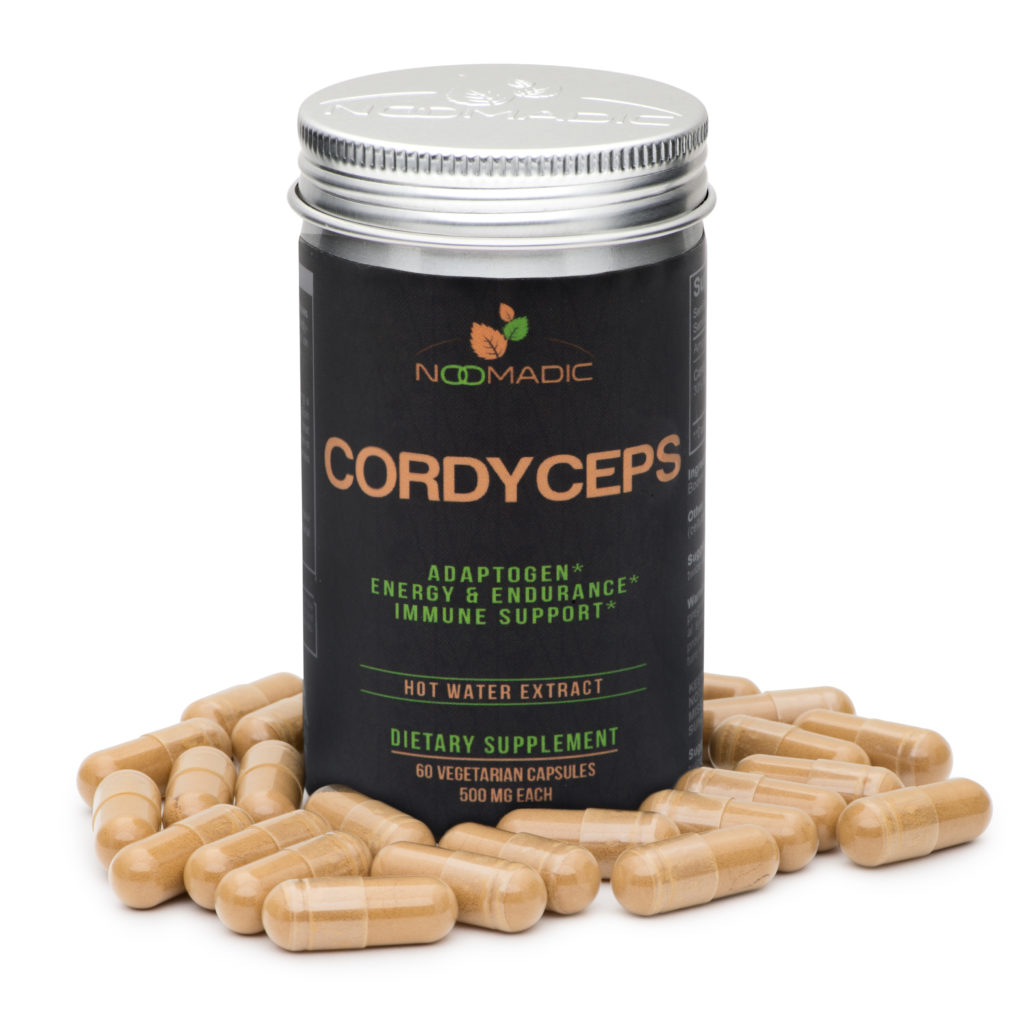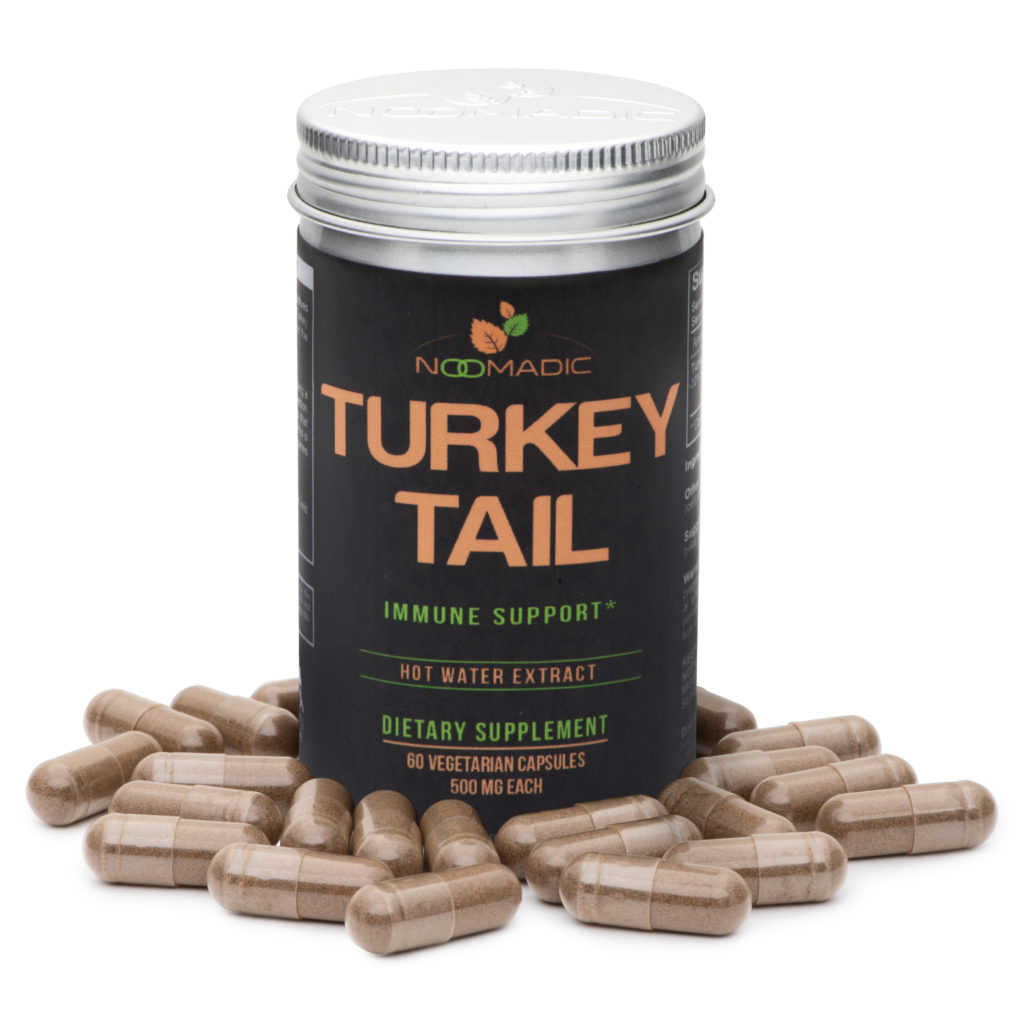As more people become interested in the health benefits of mushrooms, how exactly to access those benefits is understandably becoming a hot topic. Should one just eat a lot of mushrooms? There are a lot of different kinds of extracts on the market now, which are best to take?
The general consensus is that while eating mushrooms may be healthy, for most species only extracts can deliver an effective dose of the medicinal principle. The extracts also must have been properly processed in order to dissolve the chitinous cell walls of the fungus, or the medicinal substances won’t be available to the human body—humans are unable to digest chitin, meaning that raw mushroom and raw mushroom products go right through our bodies like packages that never get opened.
But the part of the fungus most people think of first, the fruiting body or mushroom, is not all there is. The mycelium, is what gives rise to the fruiting body, and while it remains inside the substrate and is often difficult to see, it, too, can be made into products and sold for medicinal use.
In some cases, the mycelium may have as much, or even more, potential medicinal value as the fruiting body does. Unfortunately, most products made from mycelium have no medicinal value at all and fruiting body based supplements are the better choice at this time.
What is a Fruiting Body?
The fruiting body of a fungus is the structure that produces spores. A mushroom is a fruiting body—technically, “mushroom” refers only to a certain type of fruiting body, but most people,

including most experts, use the word casually to refer to any kind of fungal fruiting body big enough to pick and examine in the hand. Not all fungi have such structures—some produce their spores in microscopic or nearly-microscopic bodies. The fuzz that grows on moldy food is a kind of fungal fruiting body, but no one would call it a mushroom.
Some people use the word “mushroom” as a synonym for “fungus,” but while that usage is fairly common it can easily lead to confusion and so is best avoided. The word “toadstool” is simply a synonym of “mushroom” with a nefarious connotation. It’s not a technical term. And while we’re on the subject of language, it’s not just fungi that grow fruiting bodies. The term is a catch-all for any structure for spreading spores or seeds, including actual fruit.
What is Mycelium?
The mycelium of a fungus is everything but the fruiting body. It is a network of very thin threads, called hyphae (the singular is “hypha”), that grow throughout the substrate, feeding and carrying

on whatever other business the fungus has (when hyphae from two different individuals meet, they may mate, for example). Mycelium is usually white, though other colors, such as pink or black, are possible. Usually the strands are too thin to see without magnification, though heavily colonized substrate may be visibly whitened (or made pink, or whatever other color).
Because the hyphae are so thin, it is impossible to disentangle a mycelium from its substrate, which is one reason why mycelium can’t usually be used as food.
Fruiting Bodies vs. Mycelium as Medicine
Although most studies of potentially medicinal mushrooms use extracts made from fruiting bodies, some use extracts made from mycelium, while others use a mix of the two. The mycelium and the fruiting body of the same fungus can have very different biochemical properties, so it’s possible for one to be medicinal while the other isn’t, or is medicinal in a different way.
In some species, the mycelium is indeed regarded as having medicinal value that the fruiting body does not. It should not be assumed, however, that mycelium is categorically better than the fruiting body, or that a combination of fruiting body and mycelium is categorically better than a product made from the fruiting body alone. It all depends on the species in question.
A mycelium extract from a species of fungus whose mycelium isn’t medicinal is pointless. A badly-made extract from a medicinal mycelium is also pointless.
Mycelium vs. Mycelium on Grain
Now here lies the problem, virtually all commercially available mycelium products are “mycelium on grain,” that is mycelium that has been dried and powdered along with its substrate, usually brown rice. There are a couple of problems with these products, even leaving aside the question of whether the mycelium is medicinal in the species in question.
First, these products may be raw, unprocessed except for being dried and powdered, or they may be “tinctures,” meaning raw powder soaked in alcohol. Just like raw, powdered mushroom, these products are useless, since the chitinous cell walls are still intact. Alcohol can extract some medicinal components of plants, but can’t do much against chitin.
The other major difficulty is that mycelium feeding on grain always leaves left-overs, sometimes a lot of left-overs—certainly more grain than mycelium by volume. There is no way to remove the mycelium from its left-over substrate, remember. Using hot water in the first stage of an extraction process, as is done for mushrooms, may well pull out medicinal compounds from the mycelium, but it will also make brown rice tea.
If there is a medical advantage to heavily diluting mycelium extract with brown rice tea, it’s not supported by research, yet.
It is possible to culture mycelium in a liquid medium, meaning that the left-over substrate can just be drained away, leaving pure mycelium ready for the extraction process. Unfortunately, liquid culture is prohibitively expensive for commercial use, so extracts from pure mycelium are not available in stores.
Should I Buy Supplements Made out of Fruiting Bodies or Mycelium?
What you buy is ultimately up to you and your healthcare provider, but you are wasting your money if you buy a low-quality product made from “mycelium on grain”— and because the supplement industry is largely unregulated, recognizing quality can be difficult. Unfortunately, virtually all low-cost options are low-quality, although slick advertising may hide the fact.
With mushroom products, you’re looking for extracts made in a multi-step process that involves hot water. You’re also looking for a guaranteed, measured amount of beta-glucan content—if that number is missing, it’s probably because there isn’t much, making the product worthless.
The simple answer is this – If a mushroom product uses the word “Mycelium” and it isn’t costing $100’s of dollars per kilogram, it is Mycelium on grain, a worthless bio-mass supplement filled with grain filler.
You want a Mushroom product that is a:
- Hot Water Extract
- Made with Fruiting Bodies
- Measured by Beta-D-Glucans
There is no doubt that pure mycelium can be a viable medicinal mushroom product, but the production cost currently makes it not realistic to sell. Thus, currently, only a Mushroom product that uses fruiting bodies has any efficiency at the present time.
Sound confusing? Make it simple. Try our Mushrooms that are Hot Water Extracted, Made of Fruiting Bodies and Measured by Beta-D-Glucans.
